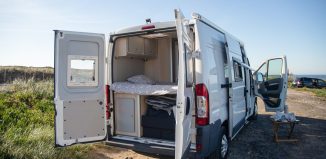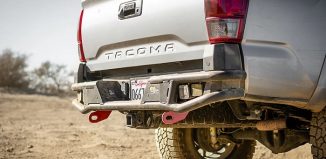Introduced as a locally-designed car way back in 2011, the PX Ford Ranger has seen blistering sales reminiscent of Blue Oval favourites of the past. A few facelifts along the way have freshened up looks and added a little tech to what is an already capable vehicle on and off the tarmac. For anyone still hoarding their cash, there’s also the replacement next-gen 2023 Ranger just hitting showrooms.
The ute’s popularity has also spawned a huge aftermarket. Buyers have the option of increasing space and carrying capacity by adding a suitable roof rack for the different cab designs, as well as increasing front-end protection with an aftermarket and ADR-approved bull bar for Ford Ranger. These are the necessary exterior accessories for a car that’s meant to be battered in all manner of driving conditions and be loaded to the brim with gear while doing so.

Why Consider Bull Bars?
The main purpose of the bull bars is to protect the entire front end of the car, including the headlights, during collisions with other vehicles. And they do a fine job when off-road, brushing off any roos or bigger wildlife that can easily disable the vehicle. The same settings are littered with rocks, ruts, and branches that have the propensity to pierce engine parts and cause irreversible damage. Bull bars are built of sturdy metals, have been real-world tested to absorb high impact, and will still stay intact no matter what they come up against.
This is the protective side of things, but a well-appointed bull bar also extends usability. Built-in winch cradles let you fit an aftermarket winch which you’ll use in cases where the ute is bogged down. The same goes for recovery points, to pull your Ranger out of a rut. Other useful additions include driving lights that can be mounted on the bull bar to increase visibility. To complete the off-roading credentials, bull bars offer better approach angles than your stock front bumper when tackling tough terrain.
Lastly, think of the rugged and ready looks a bull bar gives off. This is how utes should be shipped straight out of the factory.

What to Look for?
Designs
How the bar looks, and to a large extent the protection it provides, boils down to the design. Old-school triple hoops do offer a lot in the way of safeguarding vital engine components and the headlights but may look outdated to some buyers. Simpler single-hoop designs are also smaller but leave the radiator exposed. Newer hoop-less variants sit further down and have appointed winch cradles and enough metal to shield all engine parts. They also provide a sturdy base for heavier bash plates or underbody armour.
Materials
If you’re after optimal strength, then go for bull bars made of high-grade steel. These should be on any Ranger that sees more of its fair share of outback duty. Steel bars won’t dent in animal strikes or rupture when hitting sharp rocks. Overall strength though depends on how separate parts are put together. Look for seamless welds and thicker metal components in parts tasked to take the hit.
Any steel bull bar for Ford Ranger is simple to maintain, needing a quick hosing down to get rid of built-up dust. Additional coatings and paint will mean that it lasts longer, so no issues with rust or staining. The only downside is the weight. Steel bars are almost twice as heavy as comparable aluminium bull bars, so may require some adjustments to the front suspension.
Newer aluminium alloy bars come close to the strength seen in steel, but not quite. They make up for this by being up to 40 per cent lighter and won’t impact steering and handling as much. In addition, aluminium has better corrosion resistance, doesn’t require additional treatment or coatings, and has a polished look. Prices are similar, or slightly more than what you’d pay for a fully-specced steel variant.

Accessories
Different designs let you fit a range of accessories. Driving lights, light bars and antennas are just some of the necessities that most drivers use, especially when off-road. For lights, look for the appropriate mounting holes, and for antennas, match tabs. Integrated fog lights with quality LEDs are a nice touch. Anyone needing both front and side protection will also want side brush bars and side steps. To fit these, ensure that the bull you choose for your Ford Ranger has outer tubes. Look for the same provisions if you’re getting skid or bash plates.
Any Ranger bull bar with included recovery tow points is also worth considering. This also applies to bars that can accommodate the use of a high-lift jack.
Compatibility and Installation
ADR-approved bull bars mean that these fit the exact contours of the Ranger front, without protruding too far out in any direction. It also means that they won’t interfere with the activation of airbags in the case of collisions. Bars tailored specifically for the Ranger will be easy to get right, so installation is also straightforward. For the best fitment (and any adjustments to the suspension and/or steering) get this done at your local mechanic.












